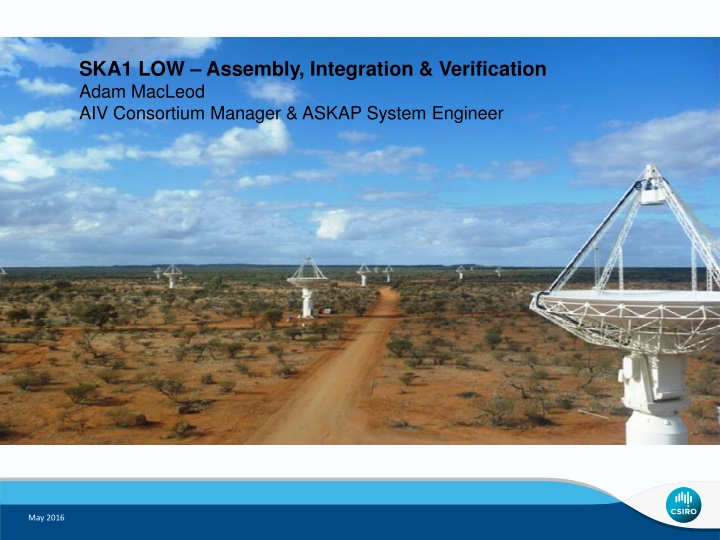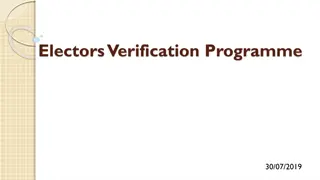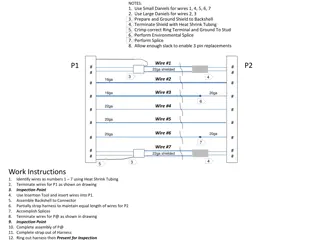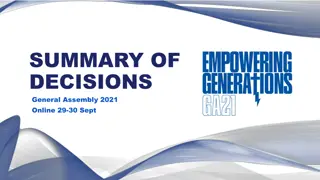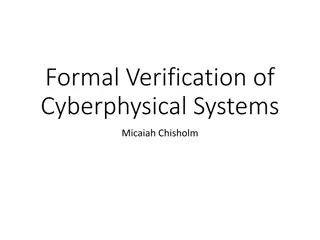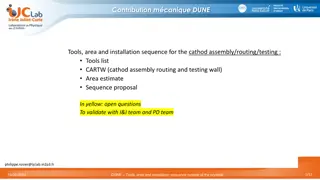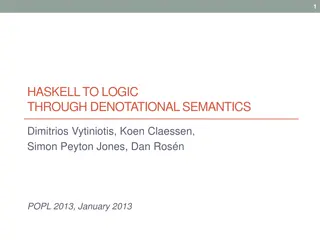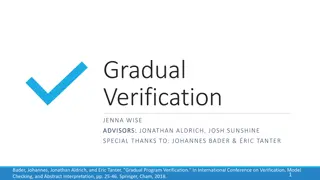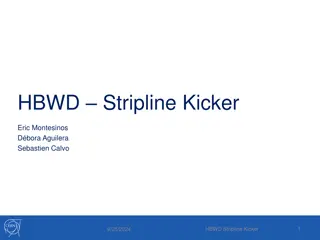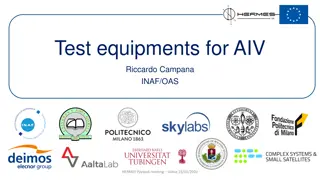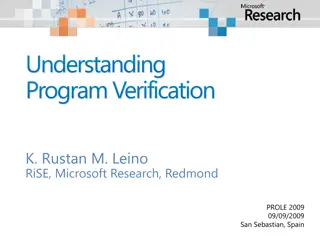SKA1 Low Assembly Integration & Verification Plan
The SKA1 Low Assembly, Integration, and Verification (AIV) Plan outlines the responsibilities of the AIV Consortium, consortium partners, and the roll-out plan for the SKA1 Low telescope. The plan encompasses user requirements validation, system verification, operational concepts, and more. It details the iterative process of assembling, integrating, and verifying the telescope array to ensure successful deployment. The Array Assemblies vs. Array Releases concept is explained, along with the planned deployment of stations and baselines for verification activities.
Download Presentation

Please find below an Image/Link to download the presentation.
The content on the website is provided AS IS for your information and personal use only. It may not be sold, licensed, or shared on other websites without obtaining consent from the author.If you encounter any issues during the download, it is possible that the publisher has removed the file from their server.
You are allowed to download the files provided on this website for personal or commercial use, subject to the condition that they are used lawfully. All files are the property of their respective owners.
The content on the website is provided AS IS for your information and personal use only. It may not be sold, licensed, or shared on other websites without obtaining consent from the author.
E N D
Presentation Transcript
SKA1 LOW Assembly, Integration & Verification Adam MacLeod Engineering Commissioning AIV Consortium Manager & ASKAP System Engineer May 2016
Introduction - The AIV Consortium - The SKA1 Low Roll Out Plan - Handover & Sell-Off, Support & Maintenance
The AIV Consortium - Responsible for planning Assembly, Integration and Verification of the two SKA1 telescopes in construction. User Requirements Validation System Verification Operational Concept Description Science Validation Telescope Requirements Specification Telescope AIV Element Verification Element Requirements Specification Element AIV Component Verification - Consortium partners: - SKA SA (lead organisation) Focus on SKA1 MID Verification Design Component Specification Component AIV Design & Manufacture - CSIRO & ASTRON Focus on SKA1 LOW Time
- Based on an iterative process of Assemble, Integrate and Verify. Allow the array to grow and evolve over time. SKA LOW Roll Out Plan Infrastructure, SaDT AIV Number of SKA1 Low stations deployed AIV AIV AIV AIV Array Assembly 1 Array Assembly 2 Array Assembly 3 Array Assembly 4 Full Handover to Operations SKA1 First Station Up to 12 stations 64 x stations 256 x stations 512 x stations Back-End Functionality (CSP, TM, SDP ) Engineering Commissioning (Integration & Verification) Full Operational Support Ramp-Up of Operational Support
SKA LOW Roll Out Plan - Array Assemblies vs. Array Releases - Array Assembly refers to the assembled platform at the start of integration. i.e. input to the AIV process. - Array Release refers to the platform at the end of planned verification activities. i.e. output from the AIV process. - Array Assemblies are defined by their size (number of stations), functionality and expected dates in construction. - Implies dependencies from element level consortia. - A small amount of flexibility has been built in to address early/late delivery of components. - AIV Planning is based on a 5 year construction schedule.
AA-1 Date Description TBD Up to 12 Number of Stations SKA LOW Roll Out Plan AA1 Baselines: At least one station on a long baseline. Baseline should be long enough to demonstrate the fringe rotation functionality. AA-1 Stations are to be located away from the centre of Low Central Core either along a spiral arm or on the outer skirt of the Central Core in a suitable configuration for basic imaging. Frequency Band: SKA1 LOW Correlator Bandwidth: 100MHz Correlator Size: up to 12 station correlator Channelisation: Standard fine channelization (64k channels) Imaging Functionality: Beamforming and Continuum Imaging Spectral Line Imaging Array Capability Non-Imaging Functionality: Raw data capture at the beamformer input and output Test waveform generator Distortion detection No Zoom mode Pulsar Search 1 beam (PSS) Pulsar Timing 1 beam (PST) Operational Functionality: Full Operator & Maintainer Interface, including POST, BIT and alarm handling. Support for scheduled observation blocks (max SNR Beamformer weights calculated offline) Scalable hardware correlator Offline imaging
System Level ITF - AIV has generated a business case and draft requirements for a system level ITF - Describe a staging platform for off-site system level integration. - These are based on the system level ITF we use for ASKAP. - Focused on back-end assemblies. This facility will support first-stage integration of complex SKA1-Low sub- systems. It should allow interfaces and interoperability of the sub-systems to be demonstrated and tested. It should provide a convenient environment for collaboration between teams working in different technical domains. It should allow ease of fault isolation and issue resolution. Most first-stage integration work is either impractical or infeasible to do at site.
Notes on the ITF - Risk reduction in roll out of HW, SW, FW. - Implies that the platform evolves, but does not necessarily grow, over time. -Similar ITF being planned for SKA1 Mid in South Africa - Currently being designed in to the new SKA SA headquarters. - Not currently funded or in scope of the project. However the existence of a system level ITF for Low is a working assumption. - Location not specified. Accessibility and availability is. - Its usage is described in the Roll-Out Plan, the AIV Cost model, and the I&V Plans.
Notes on the ITF - ITF Construction: - AIV has not costed and will not design or build the ITF. - AIV will continue to provide input on ITF business case and requirements. - ITF Operation: - AIV has a component of labour in its cost model which could be directed towards operating an ITF. This would only partially cover the operating costs. - ITF Integration and Test Activities: - AIV has included labour for managing and conducting testing within the ITF. - AIV will coordinate, witness and participate in integration tests which are undertaken. - Testing will be mostly informal, sometimes formal. The ITF will be used continually throughout construction. - Training, Integration Readiness Reviews, handover and sell-off will be facilitated. Processes are TBD but contractors likely to sell-off against L2 requirements, and provide support/maintenance on top of that. - Planned use of ITF by consortia: variable. ITF usage not mandated.
Product Handover & Selloff - AIV will accept products which are proven to be Integration Ready - The criteria is documented in the AIV Handover Checklist. E.g. assessment based on - Configuration Items. - Proof of completeness - Proof of correctness - Outstanding issues, ECPs & waivers - Asset tracking - Product support and maintenance - This becomes inseparable from contractor sell-off and contractor milestones. - Discussions with the SKAO are starting. What kinds of contractual clauses? - The AIV contractor will probably need to be an agent of SKAO
Product Handover & Selloff - Handover process will need to be tailored for: - Different types of Configuration Items. - Qualification testing versus Acceptance testing. - Patches and regression testing - Required level of Validation of L2 interfaces. - Support and Maintenance - The ITF allows Validation of L2 interfaces (element to element). - AIV requires product support and maintenance through the construction phase - Design Support - Provision and replacement of products - Again .Discussions with the SKAO are starting. What kinds of contractual clauses?
Next steps for AIV -Refinement of the Roll Out Plans for SKA1 Low - Include dates to help create construction schedule dependencies. - Increased level of detail on Array Assembly functionality. - Respond to changes in L1 requirements. - Elaborate on the use of Sub Arrays. - Refinement of the Hand Over Checklist - Tailored handover processes based on CI type. - Open discussion on contractual clauses to support Handover, Product Support and Product Maintenance - Creation of detailed test procedures for SKA1 Low - Integration tests and verification tests for each Array Assembly - Well underway.
